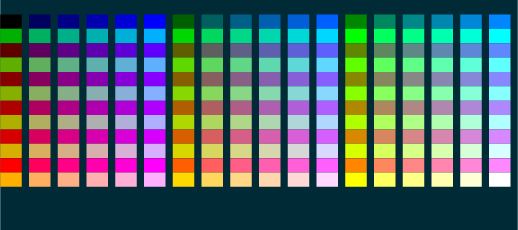8 unstable releases (3 breaking)
| 0.4.0 | Jul 27, 2024 |
|---|---|
| 0.3.0 | Jul 16, 2024 |
| 0.2.1 | Jul 1, 2024 |
| 0.1.3 | Jun 29, 2024 |
#375 in Graphics APIs
75KB
1.5K
SLoC
Termsnap turns terminal output into vector graphics. It uses an in-memory instance of Alacritty under the hood to be compatible with many terminal control sequences.
Usage
See $ termsnap --help for CLI usage documentation. For example, to run the
ls command and store the output in an SVG file, run:
$ termsnap -- ls -l > ./out.svg
Examples
These examples are generated by ./scripts/examples.sh. Note some of these examples send automated input to an interactive bash session.
Cowsay
$ termsnap --lines 9 --columns 28 -- cowsay Hello, world
Neovim
# On exit, for some terminals, Neovim clears the terminal screen by swapping
# back to the main terminal screen buffer. The `--render-before-clear` argument
# renders the terminal screen as it was just prior to that swap occurring.
$ termsnap --lines 12 --columns 60 --term xterm-256color --render-before-clear -- nvim --clean ./scripts/example.py <<EOF
:set number
:syntax enable
:q
EOF
ANSI colors
$ (
# `sleep` gives bash time to be ready for the command, if this is omitted
# the appearance of prompts can get messed up.
sleep 0.05
echo -ne "for x in {16..231}; do printf \"\\\e[48;5;\${x}m%03d\\\e[0m \" \$x; done\r"
sleep 0.05
) | termsnap --lines 16 --columns 72 -- bash --noprofile --rcfile "$PWD/scripts/inputrc"
TTY information
$ (
sleep 0.05
printf "echo \$-\r"
sleep 0.05
printf "tty\r"
sleep 0.05
) | termsnap --lines 12 --columns 60 -- bash --noprofile --rcfile "$PWD/scripts/inputrc"
Tokei
$ termsnap --lines 22 --columns 80 -- tokei
Installation
Install using Cargo:
$ cargo install termsnap
# Run ls
$ termsnap --columns 80 --lines 36 -- ls --color=always -l
# Run an interactive bash session
$ termsnap --interactive --out ./interactive-bash.svg -- bash
Run using Nix flakes:
# Run ls
$ nix run nixpkgs#termsnap -- --columns 80 --lines 36 -- ls --color=always -l
# Run an interactive bash session
$ nix run nixpkgs#termsnap -- --interactive --out ./interactive-bash.svg -- bash
The above takes Termsnap from the nixpkgs repository. To use the most up to
date version on this repository's main branch, substitute nixpkgs#termsnap by
github:tomcur/termsnap.
A note on fonts
The SVG generated by Termsnap makes assumptions about the metrics of the font
used for text rendering. Specifically, the font's character advance, line
height and descent metrics are used to determine how to lay out the terminal's
cells in the generated SVG. The default metrics can be overriden by passing
--font-{advance,line-height,descent} arguments to Termsnap. You can use the
CLI program font-info to determine the
metrics of the font you want to use. Alternatively, you can use the font editor
Fontforge.
The font is not embedded and the text not converted to paths. If the client rendering the SVG can't find the specified font, the SVG may render incorrectly, especially if the metrics of the font used for rendering vary signficantly from the metrics used to generate the SVG. You can use, e.g., Inkscape to convert the text to paths---the downside is the text may lose crispness when rendering at low resolutions. You can also convert the SVG to a raster image.
# Text to path
$ inkscape --export-text-to-path --export-plain-svg --export-filename=./out.svg ./in.svg
# Render to raster image
$ inkscape --export-width=800 --export-filename=./out.png ./in.svg
Dependencies
~8–18MB
~249K SLoC




